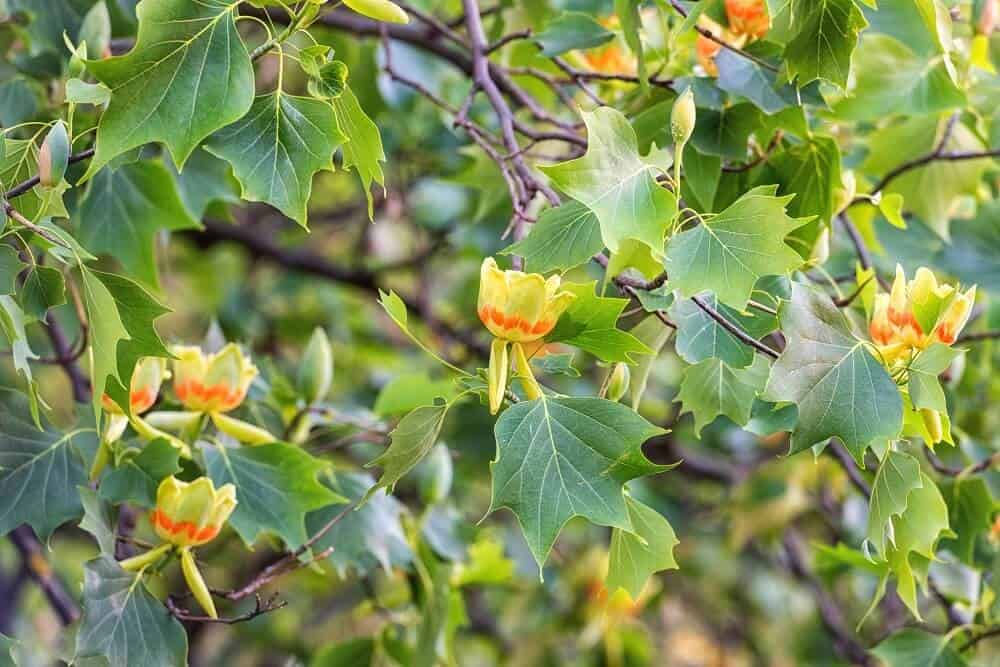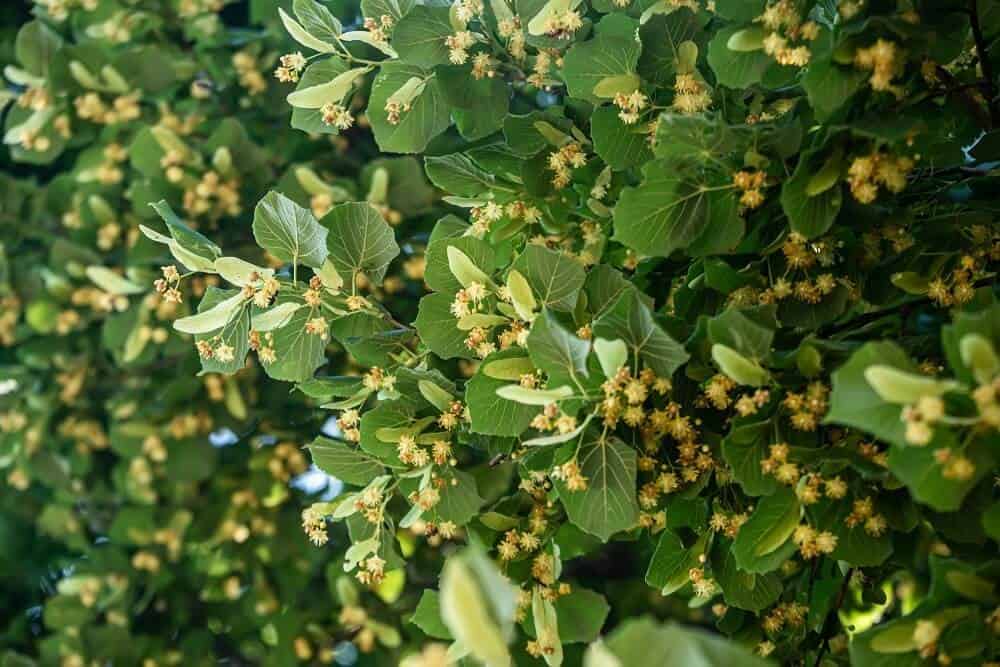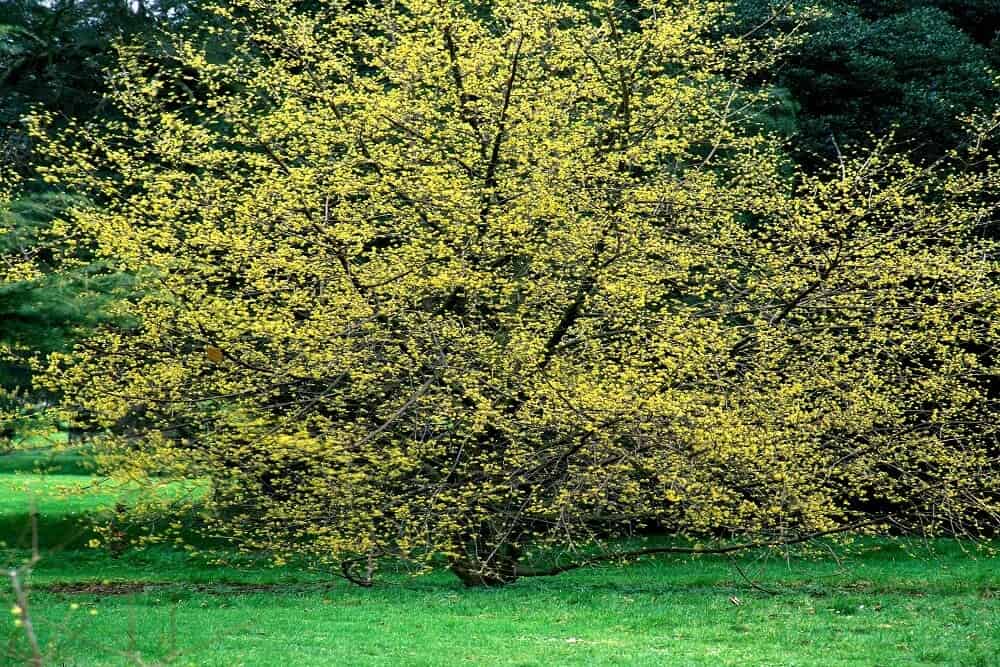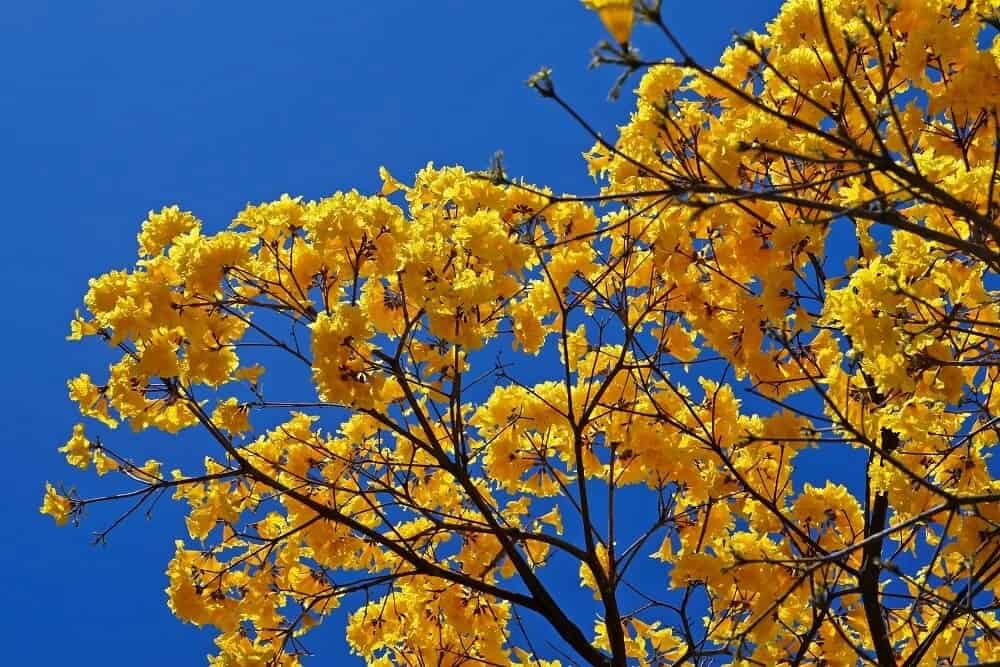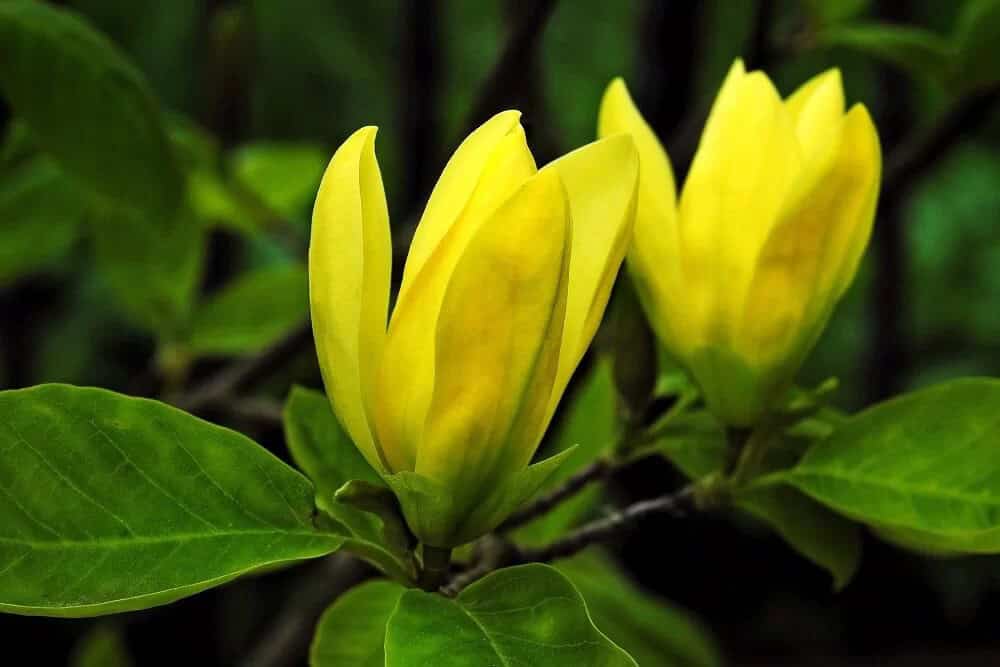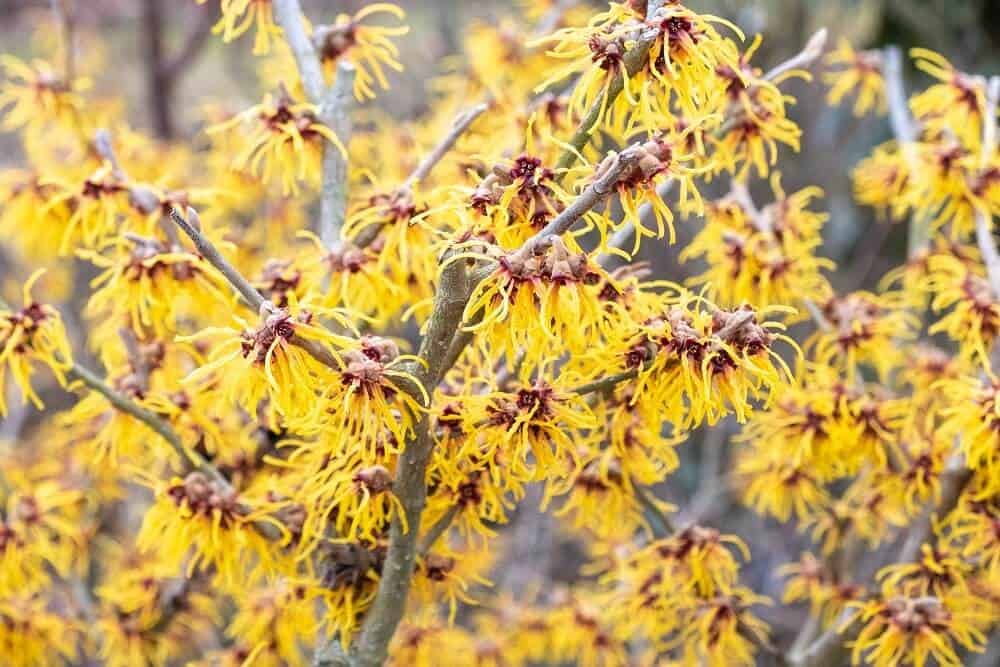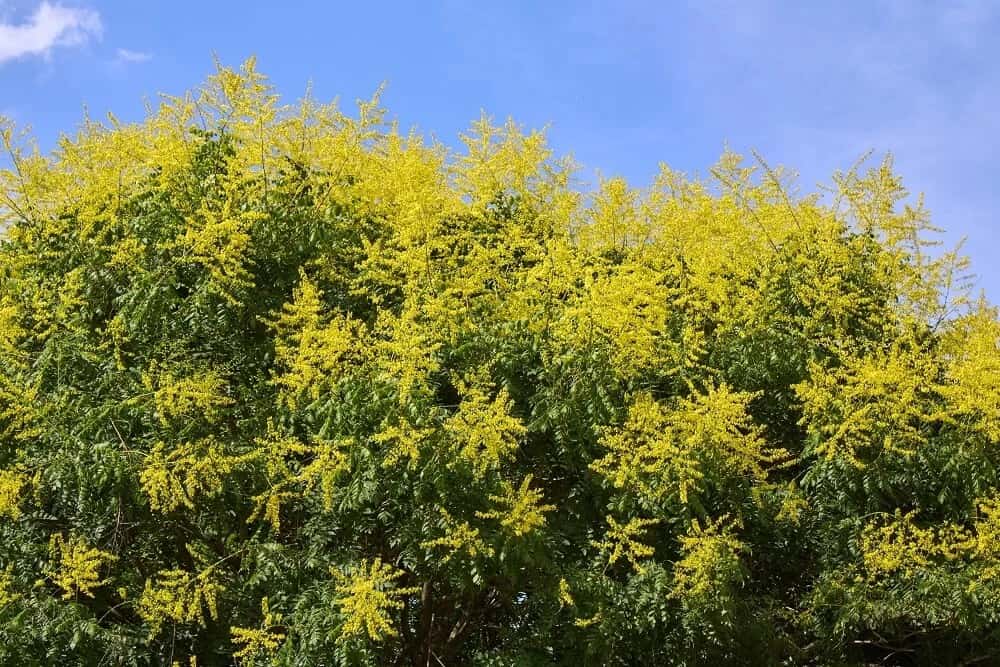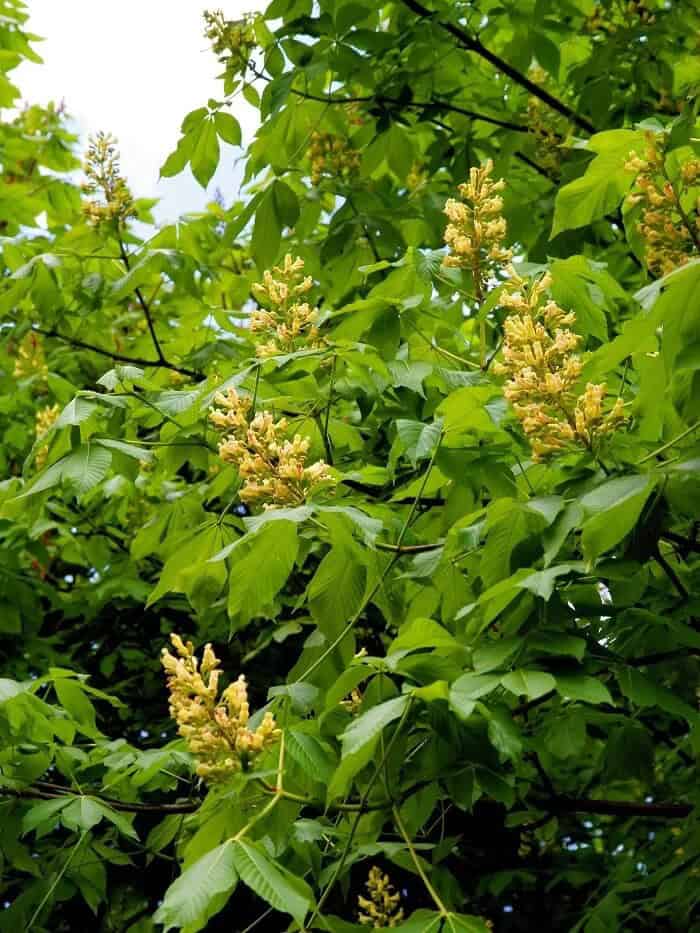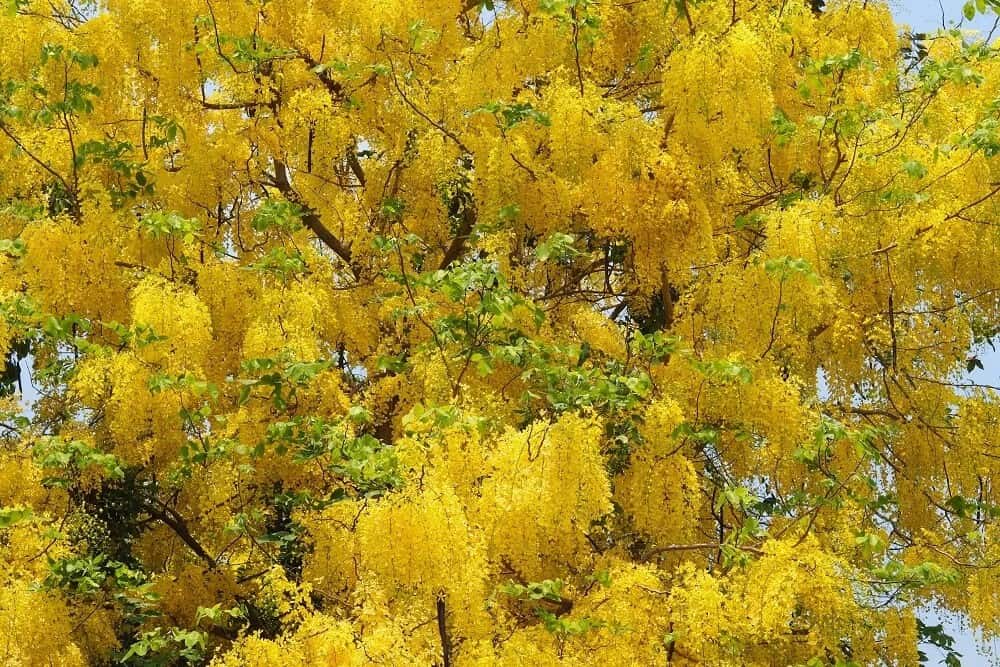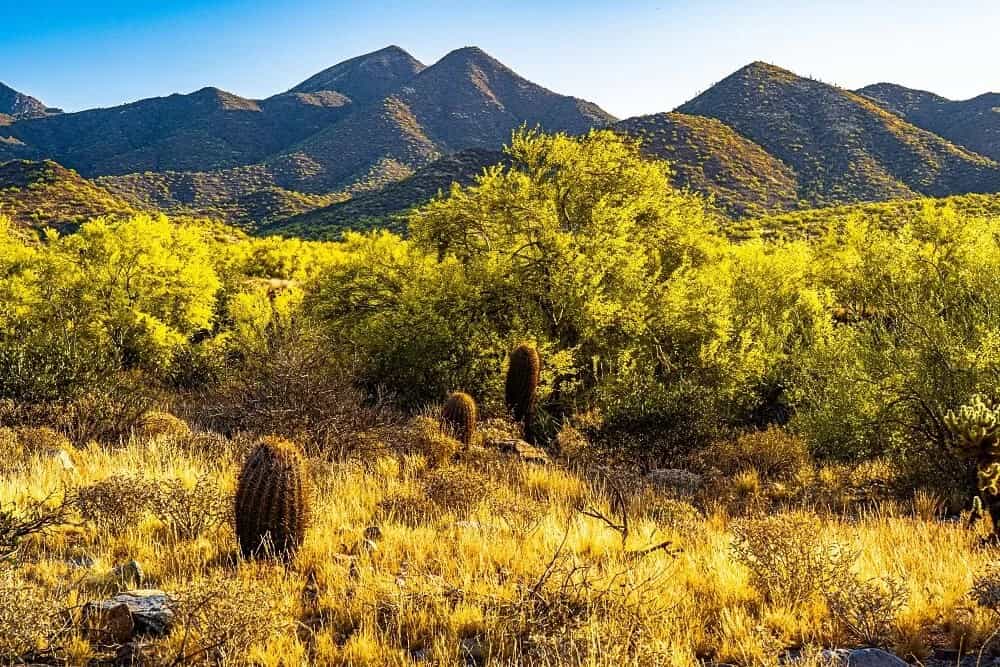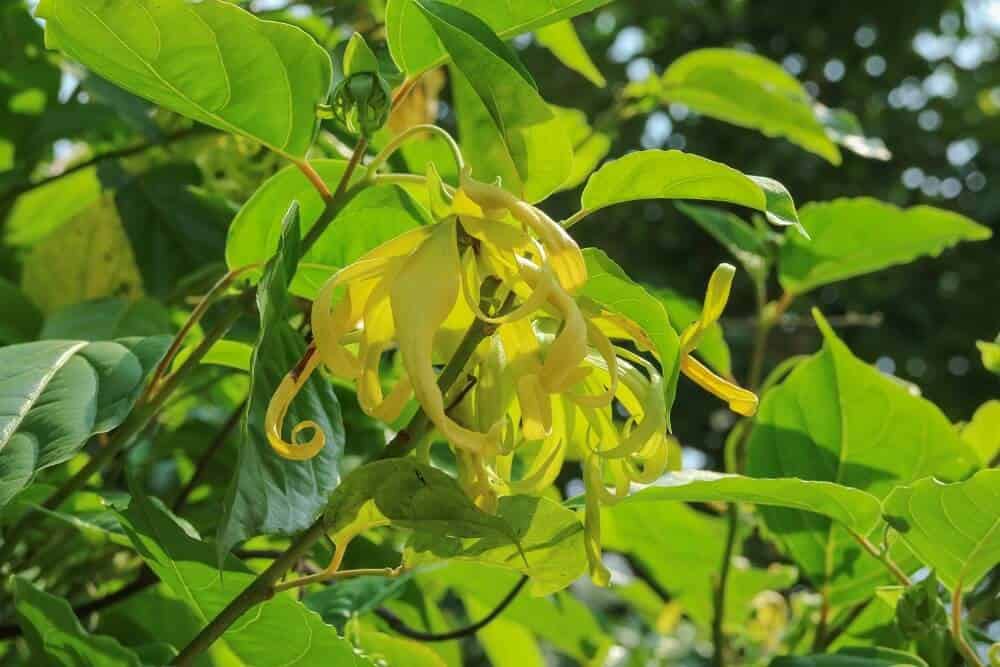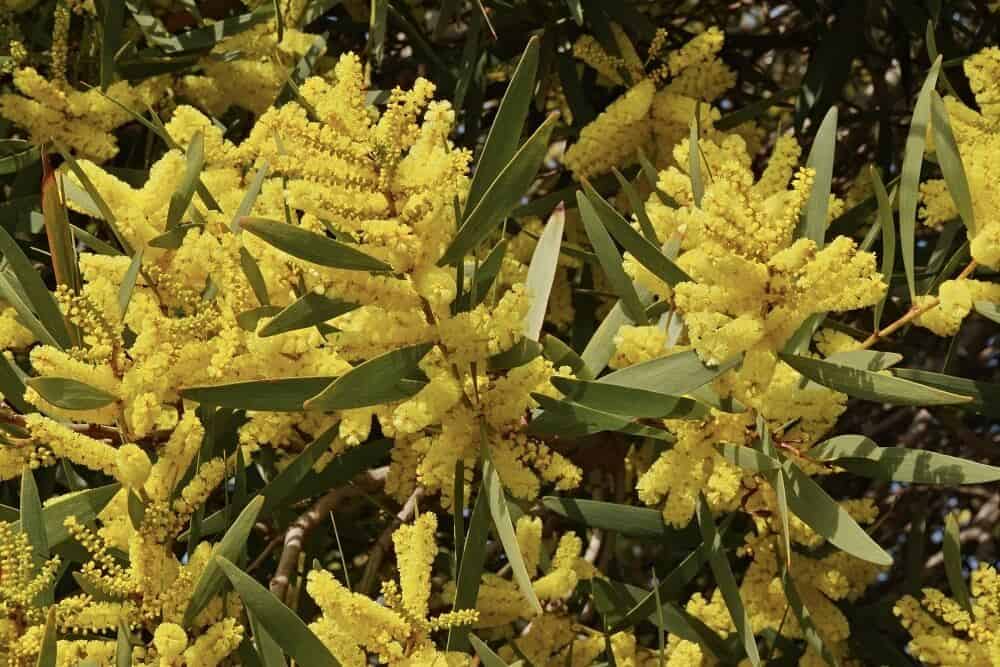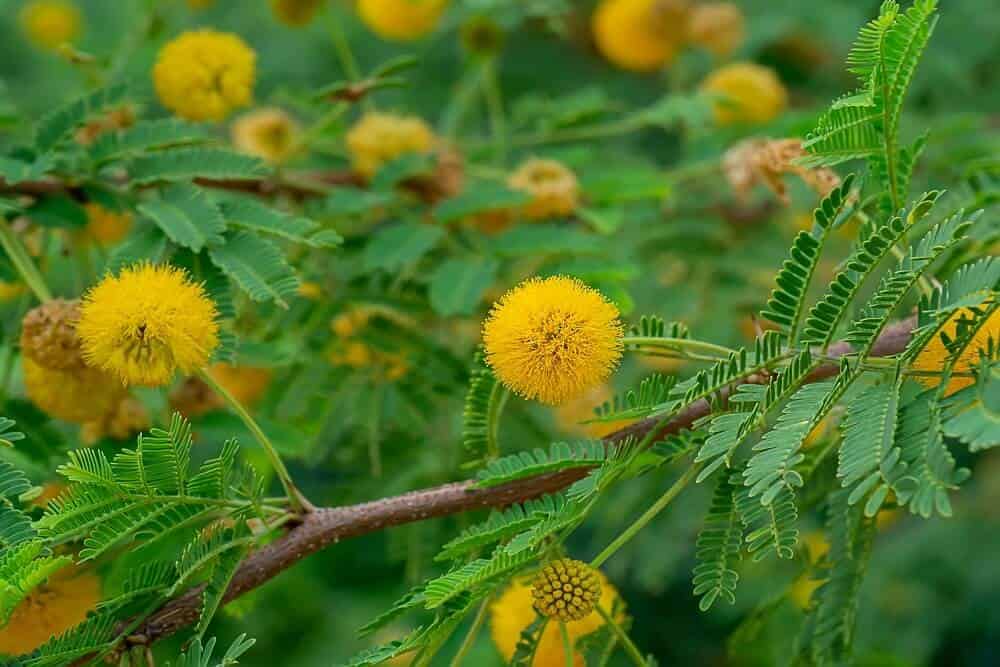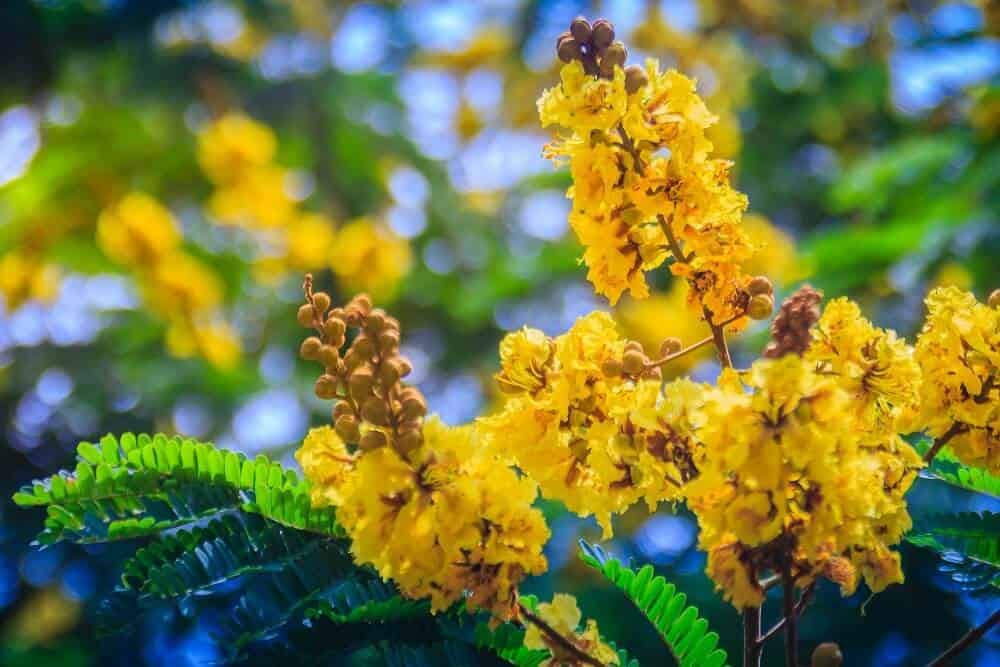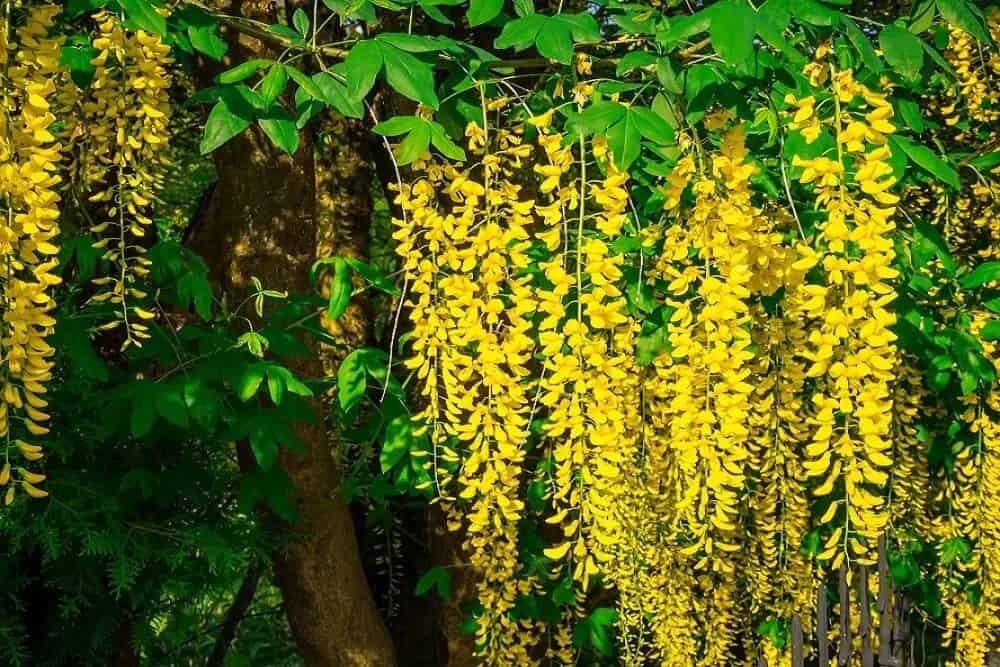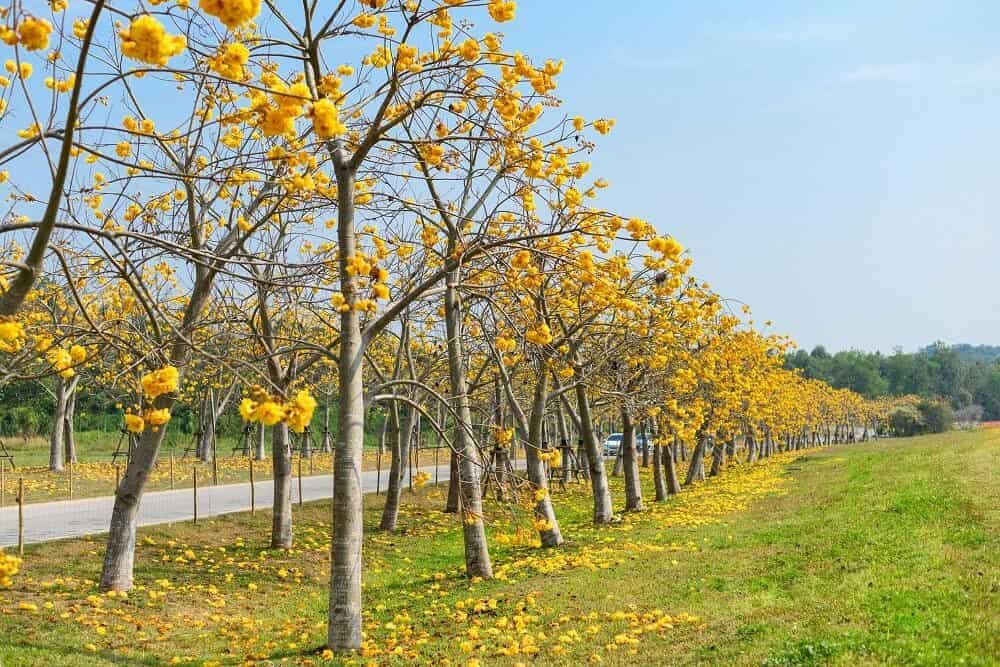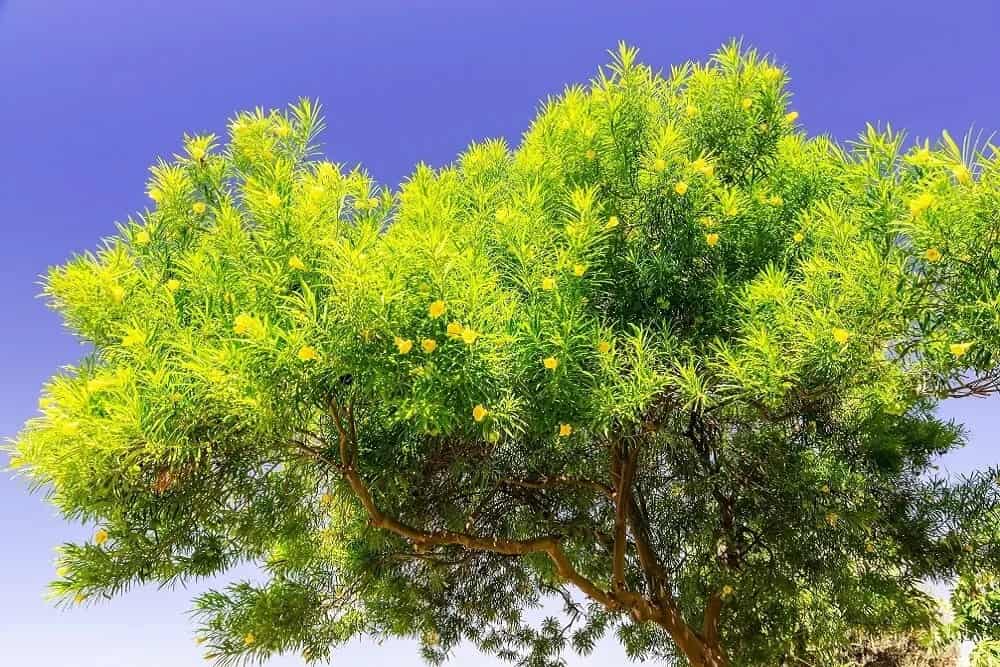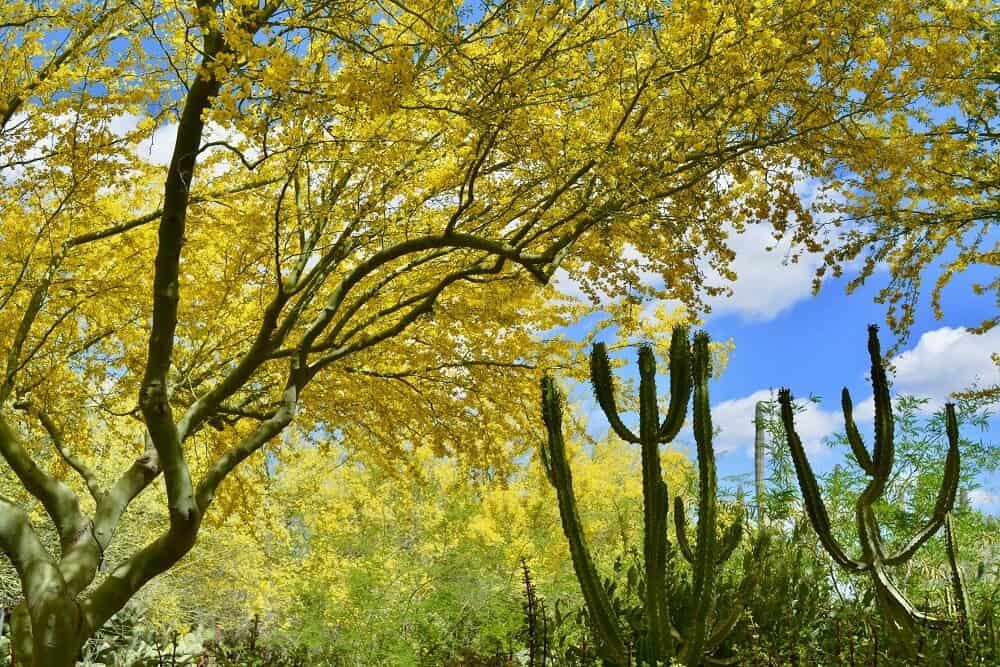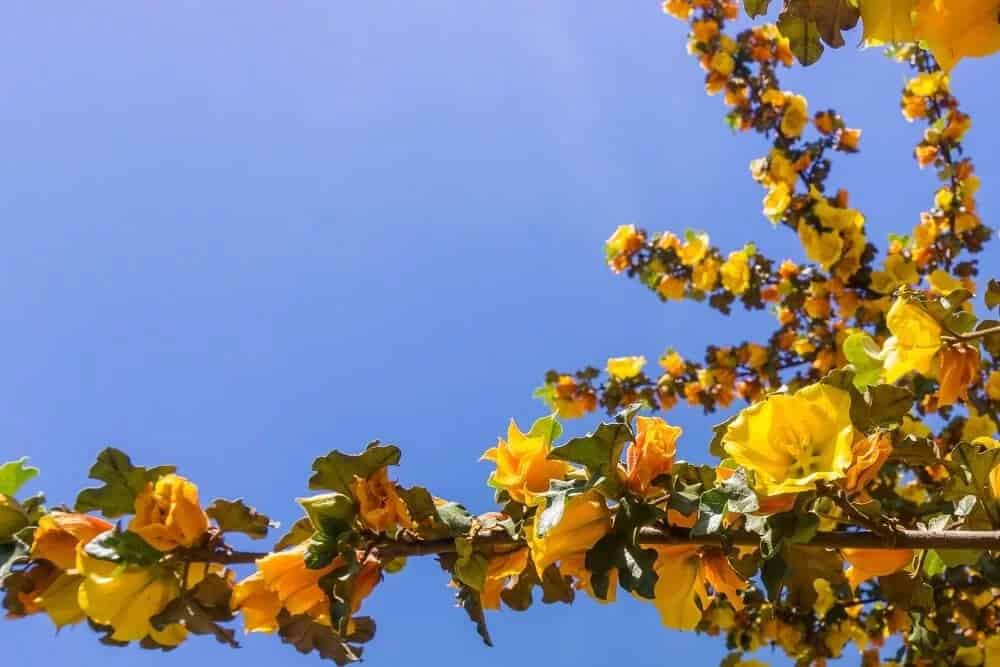As the sun shines down, trees adorned with vibrant yellow flowers illuminate the garden from above. The beauty of these radiant blooms brings unparalleled joy to the outdoor space. Among the many varieties of trees featuring stunning yellow flowers, some notable standouts include the Yellow Silk Floss Tree and the Golden Raintree, whose massive clusters of tiny yellow petals make a dramatic impact.
The energy and vibrancy of yellow are particularly precious in spring-blooming trees like Cornelian Cherry and Tulip Tree, while winter bloomers like Witch Hazel and year-round bloomers such as Sweet Acacia also showcase the allure of yellow-flowering trees.
Key Takeaways
The sheer diversity of trees bearing bright yellow blooms is nothing short of astonishing. What’s more, there exists a remarkable array of options to suit every region and climate. In arid environments like deserts, certain species of yellow-flowering trees have adapted to thrive, while others have evolved to flourish in the lush conditions found in tropical regions.
As for their origins, some yellow-flowering trees are native to North America, whereas others hail from far-reaching corners of the globe. One characteristic that unites these trees is their varying stature, with most ranging in height from approximately 25 to 40 feet tall.
Sunny Yellow-Flowering Trees for Glowing Warmth in The Landscape
Tulip Tree (Liriodendron tulipifera)
The Tulip Tree, a native species found throughout North America, is renowned for its vibrant yellow blooms with distinctive orange bands. These striking flowers emerge from May to June, showcasing the tree’s magnificence. Measuring between 60 to 90 feet tall, with a canopy spanning 30 to 50 feet wide, this majestic tree boasts a sturdy trunk that can grow up to 4 to 6 feet in diameter.
As part of the Magnolia family, its native range stretches from Massachusetts and Wisconsin in the north, down to Florida and Mississippi in the south. Notably, it holds state tree status in Indiana, Tennessee, and Kentucky. Thriving in USDA zones 4 to 9, this yellow-flowering beauty excels as a shade tree, particularly in large landscapes. Its versatility is further emphasized by its ability to tolerate heavy wet soils, deer, and rabbits, while also attracting birds and hummingbirds.
Linden Tree – American Basswood (Tilia americana)
American Basswood, also referred to as American Linden, is a native tree species that thrives in North America. Its most distinctive feature is the fragrant yellow flowers it produces in June, which attract a variety of wildlife such as birds and butterflies. Beyond its showy blooms, this resilient tree also provides support for other local fauna. Notably, American Basswood is exceptionally cold-hardy, tolerating temperatures as low as USDA zones 2 to 8.
As a result, it makes an excellent choice for planting in areas that require a flowering shade tree. Additionally, its tolerance for harsh weather conditions and adaptability to different environments make it an ideal candidate for conservation projects, riparian plantings, and even serving as a natural windbreak.
In the wild, American Basswood can be found growing abundantly in rich woodlands and along streams, spanning its native range from southern Canada to Oklahoma, Tennessee, and North Carolina.
Cornelian Cherry (Cornus mas)
The Cornelian Cherry is a striking dogwood species that bursts into bloom in early spring, its bright yellow flowers clustering on the branches before the leaves emerge. But its charm doesn’t stop there – the tree’s exfoliating bark offers a unique winter interest. As the seasons progress, the dark green, glossy leaves provide a lush backdrop for the deep red, oval fruits that ripen in summer.
These fruits are not only a delight to humans but also an excellent source of sustenance for local wildlife, attracting birds and squirrels. With its European roots, this compact tree has been introduced to the USA, where it can grow up to 25 feet tall and 20 feet wide. Its remarkable four-season appeal includes early blooming, making it a long-lived and engaging addition to any landscape.
Yellow Tabebuia / Golden Trumpet (Handroanthus chrysotrichus)
As the seasons transition from winter to spring, the Golden Trumpet tree awakens with a burst of trumpet-shaped flowers. These blooms emerge during a fleeting period when the tree sheds its 4-inch, palmate leaves that have a silvery hue. While individual flowers are already impressive, they’re often found in large clusters or groups that can stretch up to 8 inches long, providing a striking contrast against the tree’s sturdy branches.
As the flowering process comes to a close, each tubular bloom transforms into a lengthy, furry seedpod with a golden-red tint. This remarkable transformation is just one of the many fascinating aspects of this fast-growing tree. When mature, Golden Trumpet trees can reach heights and widths of 25 to 35 feet, making them an excellent choice for specimen or street planting.
Once established, they demonstrate impressive drought tolerance, making them a low-maintenance option for homeowners and landscapers alike.
Yellow Bird Magnolia (Magnolia ‘Yellow Bird’)
With its vibrant display of yellow blooms, Magnolia trees are a sight to behold. Among the many varieties on offer, our top choice is the Yellow Bird Magnolia for its delicate pale-yellow flowers that burst forth in spring. The flowers themselves are nothing short of stunning, boasting a sweet fragrance and an elegant cup-shaped form that crowns the branches. As the seasons transition, large, dark green leaves emerge, sporting pointed tips and turning a rich copper-bronze hue come fall.
But that’s not all – in early autumn, the tree dons its most striking garb yet, as attractive pink pods appear, bearing fruit of the Yellow Bird Magnolia. A bit of trivia: this lovely tree thrives in full sun, where it will produce an abundance of blooms. Its hardiness zones are 5 to 10, with a remarkable size range – reaching heights of up to 40 feet and spreading its canopy to a width of 30 feet. All in all, the Yellow Bird Magnolia is a majestic specimen that’s sure to impress.
Witch Hazel (Hamemelis x intermedia)
Witch Hazel’s striking features are hard to ignore, particularly its unique blooms that appear to be one of the earliest in the spring season. The tree’s upright vase-shaped structure is adorned with open, spreading branches that are completely covered in ribbon-like petals, giving it a mesmerizing appearance. Its intoxicating fragrance is especially prized during winter’s end, making it an excellent choice for specimen trees.
Growing 15 to 20 feet tall, Witch Hazel is hardy in USDA zones 5 to 9 and requires a bit of extra space to thrive, although it can also be grown in groups to create a stunning display. The tree’s flowers are available in a range of colors including yellow, red, and orange, with some notable varieties featuring bright yellow petals surrounding deep purple calyxes or showcasing excellent fall leaf color shows of yellow, orange, and red.
Golden Raintree (Koelreuteria paniculata)
This vibrant summer-blooming tree produces stunning gold upright panicles measuring 12-to-15 inches long, comprised of thousands of tiny star-shaped yellow flowers. As the blooms fade, Golden Raintree sheds a golden carpet of delicate petals, earning its common name. During this time, it serves as a vital nectar source for pollinators, providing a welcome respite from their wandering.
While an exceptional choice for a yellow-flowering tree, Golden Raintree also excels as a shade tree, street tree, or striking specimen tree. Its impressive array of resistances includes drought, pollution, deer, heat, and wind, making it a thoughtful alternative to invasive options like Tree of Heaven (Ailanthus altissima). Native to Asia, this beautiful tree has been introduced to the USA and Europe. It thrives in USDA zones 6 through 9, reaching heights and widths of 30 to 40 feet.
Yellow Buckeye (Aesculus flava)
Yellow Buckeye’s showy blooms are a defining feature of this stunning North American native. In the spring, its large panicles can reach up to 7 inches in length, making them a striking sight. When mature, these trees can grow as tall as 90 feet, providing a majestic presence in any landscape. They thrive in naturalized areas, open woodlands, and near waterways like ponds or streams, where their unique characteristics can truly shine.
One thing to note about Yellow Buckeye is the fruit it produces. The individual creamy yellow flowers give way to 2-to-3-inch fruits that, although beautiful, can be messy. Additionally, these fruits are high in saponins and carry a poisonous warning if not handled correctly. This makes it essential to properly treat any fallen seeds or debris. Yellow Buckeye is hardy in USDA zones 3 to 8, making it well-suited for the Eastern USA.
Its trunks can grow up to 3 feet across, forming an attractive oval crown that adds visual interest to the surrounding landscape. With its unique characteristics and majestic presence, Yellow Buckeye is a fantastic choice for any gardener looking to add some drama and natural beauty to their outdoor space.
Golden Shower Tree (Cassia fistula)
The Golden Shower Tree’s striking feature is its dramatic, pendulous flower clusters that mature into large, dark brown seedpods up to 2 feet in length. These seedpods persist on the tree throughout winter, adding a unique touch of interest during this season.
This fast-growing tree thrives in USDA hardiness zones 10b to 11, with its origins in India, Malaysia, and Southeast Asia.
Reaching heights of 30 to 40 feet tall and wide, it boasts gorgeous pinnately compound leaves, vibrant yellow flowers that cascade down its branches, and intriguing seedpods.
As an excellent shade tree, street tree, or lawn specimen, the Golden Shower Tree’s unique combination of characteristics makes it a standout addition to any landscape.
Yellow Palo Verde (Parkinsonia microphylla)
Yellow Palo Verde is a prized choice for xeriscapes and desert gardens due to its unique characteristics. This small deciduous tree features open, spreading branches that provide a picturesque canopy. Native to North America’s deserts, Yellow Palo Verde grows moderately slowly, reaching heights of 15-25 feet depending on the availability of water. When thriving in full sun within USDA zones 9-10, this stunning tree bursts into bloom in late May, flaunting pale yellow, pea-shaped flowers.
As summer arrives, small, golden-brown pods dangle from the branches, adding to its natural charm. While the tree’s drought tolerance makes it an excellent selection for arid environments, be prepared to don protective gear when managing this prickly plant, which prefers gravelly, well-drained soil.
Ylang Ylang (Cananga odorata)
As you fall under the allure of Ylang Ylang’s intoxicating aroma, you’ll find yourself captivated by its potential as a living entity. Beyond its renowned fragrance, this tree boasts a range of applications in the culinary world, perfumery, and natural medicine. Its versatility is matched only by its unique growth habits. A tropical delight, Ylang Ylang thrives in USDA zones 10 to 12, with its roots tracing back to the Philippines, Malaysia, and Indonesia.
Preferring the lush environments of moist evergreen forests, this tree reaches heights of up to 30 feet as it produces vibrant yellow flowers that graduate from green to a warm brown hue. The drooping blooms cluster in groups of 4 to 12, each 3 inches long before ripening into elongated green fruits measuring approximately 1 inch in length.
Cootamundra Wattle (Acacia baileyana)
Hailing from New South Wales in Australia, the Cootamundra Wattle boasts an impressive display of yellow flowers throughout its growth cycle. As this evergreen matures, it produces seedpods that house long-lasting seeds, allowing for naturalization or weedy propagation beyond its native range, a testament to its drought-resistant nature.
Despite this potential, the Royal Horticultural Society has bestowed the Award of Garden Merit upon this tree due to its striking features: delicate, silvery grey leaves resembling ferns and terminal branches smothered in vibrant yellow flowerheads during winter and spring. In USDA hardiness zones 10 to 11, this flowering tree can reach heights and widths of 20 to 30 feet, making it an excellent addition to a Mediterranean-themed garden or used effectively on banks and borders.
Sydney Golden Wattle (Acacia longifolia)
Sydney Golden Wattle’s vibrant yellow blooms create a stunning display, as the entire plant is cloaked in an abundance of rod-shaped flowers. These flowers are followed by elongated seed pods that droop downwards. This versatile tree or shrub grows between 20 to 30 feet tall, with smooth grey bark and long, slender leaves that range from 2 to 8 inches in length. Flowering typically occurs from early winter to early spring.
In its native Australian environment, the seedpods and seeds are a valuable food source for parrots, while bees and other pollinators are drawn to the flowers’ bright yellow hue. Notably, this low-maintenance tree is also useful for erosion control and windbreaks.
Sweet Acacia (Vachellia farnesiana)
Sweet Acacia is a compact tree that thrives in arid environments where rainfall is scarce. Its delicate, feathery leaves with soft green hues and chocolate brown stems are accompanied by sharp thorns, making it less suitable for playgrounds. However, this charming tree has a special place in the hearts of wildlife and birds. The tree’s showy, fragrant flowers bloom throughout the year, with the most impressive displays occurring in late winter.
These pom-pom-shaped blooms cluster together to form bright yellow, globe-like arrangements that can grow up to 2-3 inches long. As they mature, they produce elongated seedpods containing purplish-red seeds that are highly prized by birds. The small tree’s rounded vase-shaped crown reaches heights of 15 to 25 feet, making it an attractive addition to any landscape.
Yellow Flame Tree (Peltophorum pterocarpum)
The Yellow Flame Tree boasts a stunning yellow floral display that effortlessly evokes a tropical ambiance. A hardy and versatile species, it thrives in USDA zones 10 to 11, making it an excellent choice for shade trees or specimen trees in larger landscapes. The tree’s spreading canopy creates soft, dappled shade beneath its delicate, feathery leaflets. Matures to 40-50 feet tall with a spread of 30-50 feet wide.
In the spring and fall seasons, the entire canopy is transformed into vibrant yellow clusters as the tree blooms for months on end. The sweet fragrance emitted by the terminal panicles is reminiscent of ripe grapes, drawing in insects and pollinators. As the flowering branches develop, interesting seedpods emerge, adding a pop of color to the overall display with their copper hue and 4-inch length.
Yellow Chain Tree (Laburnum)
The Yellow Chain Tree is a vibrant and dynamic alternative to Wisteria, boasting 10-to-20-inch clusters of bright yellow flowers that drape elegantly across its framework. This sun-loving tree thrives in conditions with full sun, reaching heights of 15 to 25 feet and spreading outwards by up to 12 feet. Native to Europe, the Yellow Chain Tree, also known as Bean Tree, is a hardy species that can tolerate USDA zones 7 to 9.
Despite its sweet fragrance and attractive appearance, it’s essential to note that the tree’s parts are toxic to humans and pets. In the spring, the tree bursts forth with fragrant pea-like blooms against a backdrop of bright green three-pointed leaves, creating a stunning display. As the flowers mature, they develop into long, flat fruit pods that eventually split open, revealing their black seeds when dry.
Yellow Silk Cotton Tree (Cochlospermum religiosum)
The Yellow Silk Cotton Tree, also known as the Buttercup Tree due to its striking yellow flowers resembling giant buttercups, has a rich cultural significance. The tree’s botanical name, religiosum, is derived from the practice of offering these very flowers at temples. Conversely, the ‘silk cotton’ moniker stems from the fluffy cotton-like seeds found within the tree’s seed pods.
Standing at a maximum height of 25 feet, this compact tree thrives in dry deciduous forests and makes for an excellent addition to small gardens. The tree’s ornamental flowers are not only visually striking but also boast a sweet fragrance, further solidifying its appeal as a park or street tree. Native to Southeast Asia, the Yellow Silk Cotton Tree is well-suited for tropical landscapes.
Yellow Oleander (Nerium oleander)
Yellow Oleander, a drought-tolerant small tree, offers a unique combination of aesthetics and functionality. Its fast-growing, symmetrical crown is adorned with dark green, evergreen leaves that range in length from 2 to 8 inches. The leaves create a beautiful backdrop for the fragrant flowers, which bloom year-round but are most abundant in spring and fall. As the blossoms mature, they give way to 3-to-6-inch seedpods, which can be removed to encourage even more vibrant blooms.
This attractive tree thrives in USDA hardiness zones 9 to 11, reaching heights of 10 to 18 feet and making a stunning screen or statement piece when planted en masse.
Blue Paloverde (Parkinsonia Florida)
Blue Paloverde, a rounded desert tree native to California, Nevada, and Arizona, is characterized by its sprawling habit and drought tolerance. From March to May, clusters of vibrant lemon-yellow flowers burst forth, providing sustenance for bees and serving as a food source for birds and rodents. This versatile tree thrives in arid landscapes, preferring dry conditions and stretching up to 30 feet in height and width.
Its spiny, leafless profile for most of the year is punctuated by occasional leaf drop during times of drought, making it an excellent choice for water-conscious xeriscapes. The tree’s 2-4 inch lemon-yellow blooms are a sight to behold, with subsequent brown fruit pods reaching lengths of 2-3 inches.
California Flannel Bush (Fremontodendron californicum)
California Flannel Bush is a striking evergreen tree that bursts into bloom each spring with vibrant yellow flowers. These showy blooms attract butterflies and are native to California, western Arizona, and northern Baja California. As a drought-tolerant tree, it thrives in full sun, growing 8 to 18 feet tall in USDA hardiness zones 8 to 10. The late spring to early summer bloom period typically spans May to June, with the large, saucer-shaped flowers standing out against the dull green foliage.
The evergreen leaves themselves are a notable feature, with three lobes and measuring around 4 inches long. What’s more, these leaves and post-flowering seed capsules are covered in fine hairs that give them a distinctive flannel-like texture, hence the tree’s common name. While not as soft as it sounds, contact with the plant may still cause skin irritation in some individuals.
Yellow Silk Floss Tree (Ceiba Speciosa)
The Yellow Silk Floss Tree is an awe-inspiring tropical tree native to South America, boasting a majestic height of 50 feet. Its presence is often felt in streets of California and Florida, where it thrives in USDA hardiness zones 9 to 11. This fall-blooming beauty produces vibrant yellow flowers from October to November in the northern hemisphere, drawing in pollinators and hummingbirds with its irresistible allure.
Interestingly, mature trees are equipped with thick, conical, sharp prickles – a testament that even the most stunning creations require protection. The tree’s 6-inch flowers feature five delicate petals, resembling those of hibiscus or daylily plants. As the fruits ripen, avocado-like capsules emerge, containing black seeds roughly the size of beans. A fluffy cottony mass surrounds these seeds, which can be harvested and used as a natural silk-like stuffing.
Frequently Asked Questions About Trees with Yellow Flowers
What are the most common yellow flowering trees?
In the United States, two common tree species with yellow flowers stand out for their widespread distribution: American Basswood and Tulip Tree. Notably, these trees are native to North America, and their ranges extend across a vast area, covering much of the country from Canada in the north to Mexico in the south.
Which are the most popular trees with yellow flowers in California?
When it comes to planting trees in California, there are several species that stand out for their popularity and suitability for the state’s unique climate. The Sweet Acacia, Yellow Paloverde, and Blue Paloverde are just a few examples of highly sought-after trees among Californians. One of the key factors driving this preference is the importance of choosing drought-tolerant trees in an area known for its dry conditions.
Native species like California Flannel Bush offer a great solution to this challenge.
What tree has yellow flowers in spring?
As the warmth of spring sunshine envelops us, the vibrant yellow hues of blooming trees bring unbridled joy and a burst of energy to this beloved season. With an abundance of options to delight in, yellow spring blooms can be found on Cornelian Cherry, Golden Trumpet, and even North American natives like California Flannel Bush and Yellow Buckeye, each one offering a unique charm that’s sure to lift the spirits.
Are there any trees with yellow flowers in Florida?
Florida’s warm climate makes it an ideal location for many tropical trees with yellow flowers to flourish. The Golden Trumpet Tree, Ylang Ylang, and the Golden Shower Tree are just a few examples of species that thrive in the state’s USDA growing zones of 8, 9, 10, and 11. With their vibrant blooms adding a splash of color to the landscape, these trees are sure to bring joy to anyone who sees them.
Which trees with yellow flowers have green pods?
While many yellow-flowering trees produce unique seedpods, the Bean Tree, or Yellow Chain Tree (Laburnum), stands out for its long green pods. However, it’s essential to note that these ‘beans’ are toxic to both humans and animals, making them a hazard if ingested.
21 Sunshine-Inspired Trees with Yellow Flowers to Warm Up The Garden
When it comes to selecting trees with bright yellow blooms, many people focus on their shared ability to attract pollinators. However, what sets these trees apart is their unique adaptability to different environments. While some species like Cootamundra Wattle thrive in arid conditions, others such as American Basswood require more moisture-rich surroundings.
With a diverse range of options available, choosing the right yellow-flowering tree can be an excellent way to infuse your landscape with joy and happiness. To ensure success, it’s essential to consider the specific growing conditions of the area where you plan to plant these trees.
This might involve starting by exploring native species that are well-suited to your local environment, but don’t forget about introduced varieties from around the world that can also make a stunning addition to your landscape.
